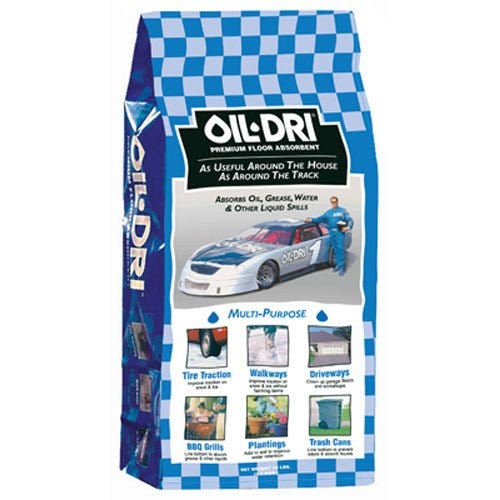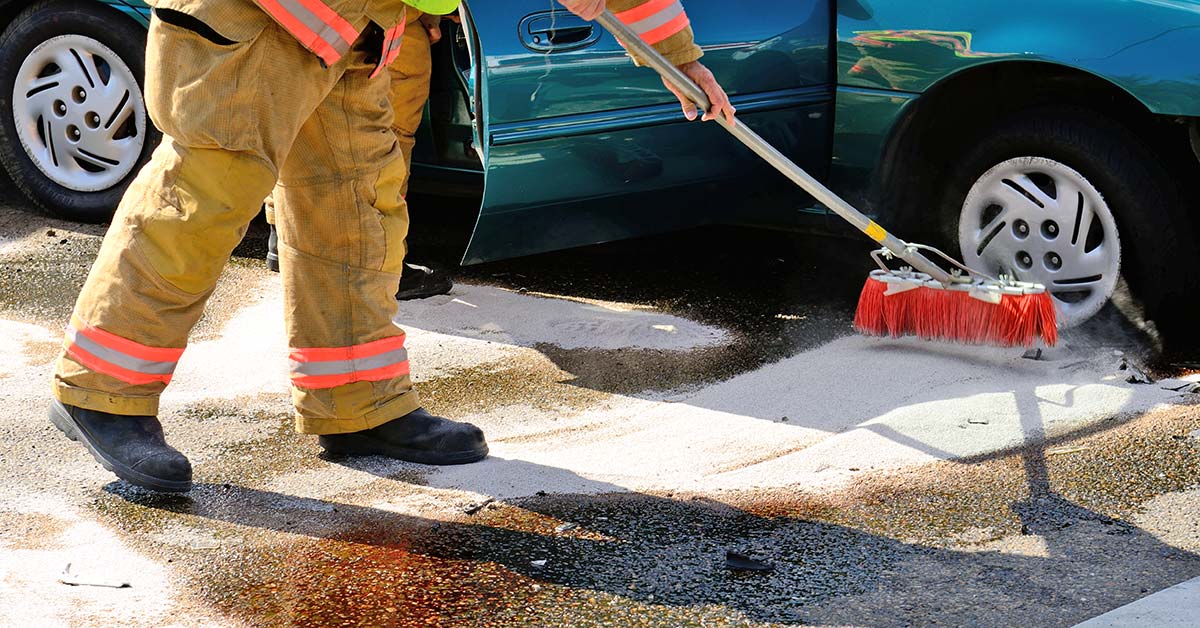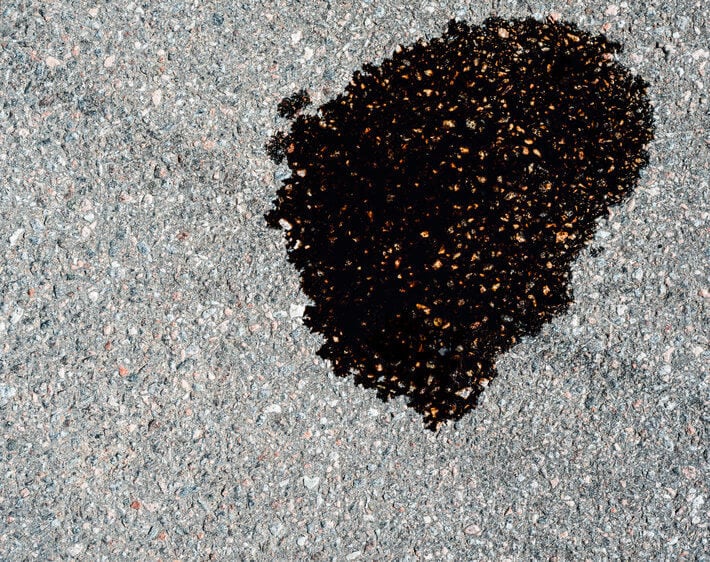To clean up car oil spills, sprinkle cat litter or baking soda on the affected area to absorb the oil. Then scrub the spot with dish soap and water.
Oil spills on your driveway or garage can be effectively managed with these simple steps. Handling oil spills promptly is crucial to prevent environmental contamination and ensure safety. By following these easy methods, you can quickly and efficiently clean up any oil spills caused by your car.

Credit: www.autoweek.com
Assessing The Spill
Do you need to clean up a car oil spill? Assessing the spill is crucial for effective cleanup. Use absorbent materials like kitty litter to soak up the oil, then carefully dispose of the waste. Always follow local regulations for proper disposal to protect the environment.
Identifying The Spill Location
When a car oil spill occurs, the first step in cleaning it up is to identify the location of the spill. This is crucial as it helps determine the extent of contamination and the appropriate cleaning methods required. Start by visually inspecting the area around the vehicle to locate any visible signs of oil. Look for dark, slick spots on the ground or pavement, or any distinct oily residue on the car’s engine or components.
Determining The Spill Size
Once the spill location has been identified, the next step is to determine the size of the oil spill. Assessing the spill size is important in understanding the scale of the cleanup effort needed. To estimate the spill size, you can use visual clues such as the extent of the visible oil stains and the surface area covered. Additionally, you can also estimate based on the amount of oil leaked from the vehicle. Try to quantify the spill size in terms of volume, such as a few drops, a small puddle, or a large pool.
If you are uncertain about the spill size, it is always better to assume a larger spill and take necessary precautions. Remember, it’s crucial to accurately determine the size of the spill in order to select the appropriate cleaning materials and methods.
Contents of this table:
| Size of Spill | Approximate Volume |
|---|---|
| A few drops | Less than 1 ounce |
| Small puddle | Approximately 1-4 ounces |
| Large pool | More than 4 ounces |
By accurately determining the size of the oil spill, you can take the necessary steps to ensure effective cleanup and minimize any potential environmental impact. Now that you have identified the spill location and assessed its size, it’s time to move on to the next step in the cleaning process.
Gathering Necessary Materials
Absorbent Materials
It’s crucial to have the right materials on hand to tackle oil spills effectively. Begin by gathering absorbent materials such as:
- Newspapers or paper towels
- Kitty litter or sawdust
- Oil absorbent pads
Protective Gear
Don’t forget to prioritize your safety. Ensure you have the necessary protective gear to safeguard yourself, including:
- Chemical-resistant gloves
- Protective eyewear
- Long sleeves and pants
Containing The Spill
Containing the Spill:
Establishing Boundaries
Establish clear boundaries around the spill area using caution tape or cones.
Using Barriers
Place absorbent pads or spill response socks to create a containment barrier.

Credit: www.progressive.com
Removing The Oil
Cleaning up car oil spills can be a breeze with these simple steps. From absorbing excess oil with kitty litter to utilizing specialized cleaners, you’ll have your car looking fresh and clean in no time.
Removing the Oil When it comes to cleaning up car oil spills, one of the most crucial steps is removing the oil itself. By effectively getting rid of the oil, you can prevent further damage to your driveway, garage floor, or any other surface that has been affected. There are two main methods you can use to remove the oil: applying absorbent materials and using cleaning agents. Applying absorbent materials: To begin the process of removing the oil, start by spreading absorbent materials over the spill. Absorbent materials such as kitty litter or sawdust are excellent choices as they can readily soak up the oil. Simply pour the absorbent material onto the spill until it is completely covered. Allow it to sit for a few minutes, giving it time to absorb as much oil as possible. Next, use a broom or a stiff brush to sweep the absorbent material around, ensuring that it reaches all corners of the spill. This helps to break up any remaining oil and allows the absorbent material to penetrate deeper into the surface. Be sure to dispose of the saturated absorbent material in a proper waste container, as it can be hazardous and should not be left lying around. Using cleaning agents: After successfully applying the absorbent material and removing the majority of the oil, it’s time to tackle any remaining traces. Cleaning agents can be especially effective in breaking down the oil and ensuring a thorough clean-up. One popular choice is dish soap, which is readily available and can be found in most households. In a bucket, mix a generous amount of dish soap with warm water to create a soapy solution. Using a scrub brush or a sponge, apply the mixture to the affected area and scrub vigorously. The soap will help to emulsify the oil, allowing it to be lifted away more easily. Rinse the area thoroughly with clean water, ensuring all traces of oil and soap have been removed. If your car oil spill has affected a porous surface such as concrete or asphalt, you may consider using a more specialized cleaning agent. There are products specifically formulated to clean oil spills from these surfaces, and they can be found at your local hardware or automotive store. Follow the instructions on the label carefully to ensure proper use and effective results. In conclusion, removing the oil from car oil spills is a crucial step in the clean-up process. By applying absorbent materials and using cleaning agents, you can effectively eliminate the oil and prevent further damage to the affected surface. Remember to dispose of any contaminated materials properly and to follow any safety precautions outlined by the cleaning agents. With diligence and care, you can restore your driveway or garage floor to its pristine condition in no time.Disposing Of Waste
Disposing of waste oil properly is important to prevent contamination of the environment. Improper disposal of oil can harm the soil and water, leading to adverse effects on plants, animals, and humans. Knowing the proper disposal methods and considering environmental factors is crucial for effectively cleaning up car oil spills.
Proper Disposal Methods
When it comes to disposing of waste oil, it is essential to follow proper methods to avoid harm to the environment. Ensure to collect the oil in a durable, leak-proof container that is specifically designed for holding oil. Label the container clearly as “Used Oil” to avoid any confusion with other substances. Seal the container tightly to prevent any leaks or spills during transportation.
Once the oil is collected, it should be taken to a designated recycling center, automotive shop, or hazardous waste disposal facility. Contact the local authorities or recycling facilities to find out the appropriate drop-off locations and procedures for disposing of waste oil. Never pour the oil down the drain, into the soil, or toss it in the regular trash.
Environmental Considerations
Environmental aspects play a significant role in the proper disposal of waste oil. Consider the impact of waste oil on the environment and take necessary measures to mitigate any potential harm. Ensure that the recycling facility or disposal location adheres to environmental regulations and standards for handling hazardous materials.
Minimize the risk of oil contamination by preventing spills during transportation and using the appropriate containers. Dispose of waste oil responsibly to minimize its impact on the environment and protect natural resources for future generations.

Credit: spillpro.com.au
Frequently Asked Questions For How To Clean Up Car Oil Spills
What Can I Use To Clean Up Car Oil Spills?
For cleaning up car oil spills, you can use cat litter or absorbent mats to soak up the oil, then clean the remaining stains with a degreaser or dish soap and water. Alternatively, you can use commercial oil spill cleaners specifically designed for car oil spills.
What Is The Fastest Way To Clean Up A Oil Spill?
To clean up an oil spill quickly, use absorbent materials like booms and pads. They soak up oil efficiently.
What Should I Do If I Spill Oil In My Car?
If you spill oil in your car, clean it up quickly to prevent any damage. Use an absorbent material, like kitty litter or sawdust, to soak up the oil. Then, dispose of it properly. Be sure to check for any leaks or spills under the car and address them as needed.
How Do You Clean Oil Off A Car?
To clean oil off a car, use a degreaser and scrub the affected area. Rinse thoroughly with water. Dry the surface with a clean cloth. Apply a car wax to protect the paint. Avoid using harsh chemicals that can damage the paint.
How Can I Quickly Clean Up A Car Oil Spill?
To quickly clean up a car oil spill, sprinkle absorbent material like cat litter over the area. Let it sit for about 30 minutes, then sweep it up.
What Is The Best Way To Remove Oil From Concrete?
The best way to remove oil from concrete is by using a degreaser or a mixture of baking soda and vinegar. Scrub the affected area and rinse with water.
What Household Items Can I Use To Clean Oil Spills?
Household items like baking soda, dish soap, and vinegar can be used to clean oil spills. These items are effective in breaking down and removing oil stains.
Conclusion
Car oil spills can be a messy and frustrating situation to deal with. However, by taking the right steps and using the right tools, you can effectively clean up the spill and restore the cleanliness of your car. From absorbing the excess oil to using the right cleaning agents, this article has provided you with the necessary information to tackle car oil spills.
Remember, quick action and careful attention to detail are key to a successful cleanup. Keep your car looking its best by being prepared for any unexpected spills that may occur.



